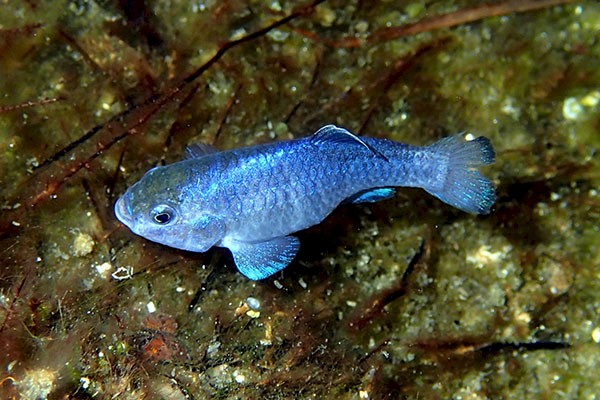
There were numerous lakes and Death Valley was filled with water 100 meters deep then. Some 10,000 years ago, the desert Southwest was a very different environment than it is today. Why do these fish, which are up to two inches in length and found in warm springs and spring outflows near Death Valley, go for long stretches of time without consuming oxygen? To better understand, researchers looked at the historical climate conditions of the area. The fish aren't simply holding their breath instead they are going into this anaerobic metabolism." What we didn't see is compensatory oxygen consumption. The longest continuous period of paradoxical anaerobism we observed was 149 minutes. "Some of the pupfish were able to go without breathing oxygen for up to five hours with only a couple of brief interruptions of oxygen use. "The pupfish's extended time not consuming oxygen made no sense, since oxygen is so much more efficient, and these pupfish live in an incredibly energy-deprived environment," said van Breukelen. Life scientists Frank van Breukelen and Stanley Hillyard originally wanted to measure how much oxygen the pupfish used to better understand the energy needs of the endangered species.Īs they conducted their testing, van Breukelen and Hillyard discovered the phenomenon they call paradoxical anaerobism. If you wish to use this content in any manner, you need written permission.UNLV researchers have discovered that pupfish, which are found only in the desert Southwest, can go for up to five hours with nearly no oxygen, and they do this even though oxygen is available. This content was written by Mary Brennecke. Related Articles Editor's Picks Articles Top Ten Articles Previous Features Site MapĬontent copyright © 2022 by Mary Brennecke.

The Importance of Clean Water For Betta Fish It is an important issue to pay attention to not only for those of us who inhabit our beautiful planet now, but for our children and future generations. The desert pupfish is a true survivor! Care needs to be taken where their habitats are concerned. Things like that happen in nature what really needs to happen is the protection (from the choices we humans sometimes erroneously make) of the pupfish in their natural habitat so that future generations will be able to see and enjoy them. The pupfish is still listed as a zoo animal which you can choose to adopt to support the zoo! The Living Desert zoo and botanical gardens in Southern California did have Pupfish on display in a pond, but, according to one of their docents, some local herons flew in from outside the zoo and had a snack, and, unfortunately, they wiped out that small population of about 100 pupfish. Pupfish also do something interesting called "pit digging" - where he wiggles his body to move the mud on the bottom out of the way - it is thought that he does this to find food! An adventurous and lively little guy - cute and with loads of personality! The pupfish eats diatoms, which are microscopic, unicellular algae, algae, and small aquatic invertabrates. This little silvery-blue to silvery-brown beauty has a small, short head, an adorable upturned mouth, silvery scales and fins all over, with gorgeous dark eyes, and sometimes a dark spot on the dorsal fin! Gorgeous! And, what a shame if we let this wonderful creature disappear from our lovely planet!

Pupfish are also at California's Anza-Borrego Desert State Park!

Pupfish are protected at various locations in Death Valley National Park, including Saratoga Springs, Salt Creek, and a portion of the park in Nevada called Devil's Hole. Many types of pupfish are endangered species because of loss of their habitat and the introduction of exotic species of fish into their habitat. They are found in Northwestern Mexico, Southern California, and Arizona. The pupfish is approximately 2 inches long and lives in springs, ponds, marshes, and slow-flowing streams in the deserts of Southwestern North America. Although their demise may have begun millions of years ago, much more recent human activities have reduced their population even more. It is the Pupfish! It is a tiny fish who used to thrive in great numbers. Every day is Earth Day! Let's take a look at an interesting fish which is endangered.


 0 kommentar(er)
0 kommentar(er)
